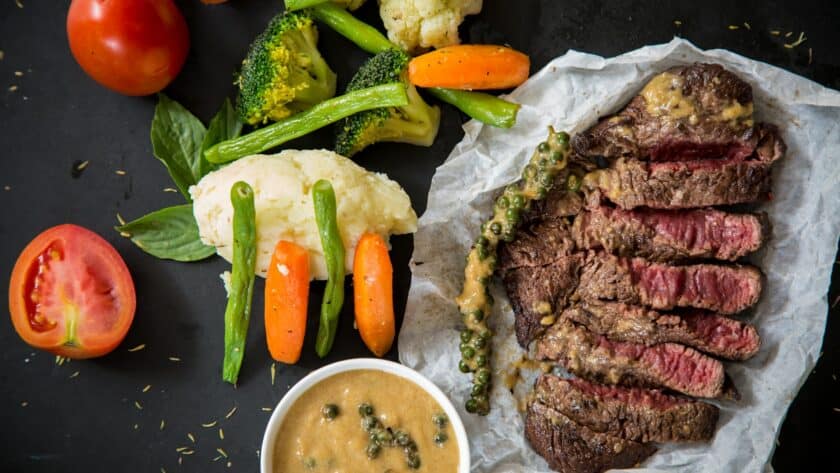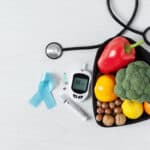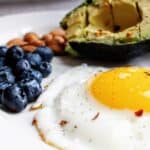Are you looking for a way to lose weight, build muscle, or simply maintain a healthy lifestyle? Look no further than the carb cycling meal plan! In this article, we’ll break down everything you need to know about carb cycling, from the science behind it to how to design your own meal plan.
Understanding Carb Cycling
First things first, let’s define what carb cycling is all about. Simply put, carb cycling is a method of manipulating your carbohydrate intake throughout the week. The goal is to strategically alternate between high carb days, low carb days, and even no carb days.
Carb cycling has gained popularity in recent years as a way to improve body composition and athletic performance. The idea behind carb cycling is that by varying your carb intake, you can train your body to burn fat more efficiently and improve your overall health.
The Science Behind Carb Cycling
So why does carb cycling work? By alternating your carb intake, you can trick your body into burning fat more efficiently. High carb days provide the energy you need for intense workouts, while low or no carb days force your body to rely on stored fat for fuel.
Carbohydrates are the body’s primary source of energy. When you consume carbs, your body breaks them down into glucose, which is then used to fuel your cells. However, when you consume more carbs than your body needs, the excess glucose is stored as fat.
On high carb days, you consume more carbohydrates than your body needs, which provides you with the energy you need for intense workouts. On low or no carb days, your body is forced to rely on stored fat for fuel, which can lead to fat loss over time.
Benefits of Carb Cycling
Aside from fat loss and improved athletic performance, carb cycling has several other potential benefits. Some people report reduced cravings, improved sleep, and better digestion.
Reduced cravings: By alternating between high carb and low or no carb days, you may be able to reduce your cravings for sugary and starchy foods. This is because consuming too many carbs can cause your blood sugar levels to spike and then crash, which can lead to cravings for more carbs.
Improved sleep: Consuming too many carbs, especially in the evening, can disrupt your sleep. By consuming fewer carbs on certain days, you may be able to improve your sleep quality.
Better digestion: Some people find that carb cycling helps to improve their digestion. This may be because consuming too many carbs can cause bloating and other digestive issues.
Who Should Consider Carb Cycling?
Carb cycling may be beneficial for anyone looking to improve their body composition or athletic performance. However, it’s especially popular among athletes, bodybuilders, and fitness enthusiasts.
If you’re interested in trying carb cycling, it’s important to do your research and consult with a healthcare professional or registered dietitian. They can help you determine the best approach for your individual needs and goals.
How the Carb Cycling Meal Plan Works
Carb cycling is a popular diet strategy that involves alternating between high, low, and no carb days. The goal is to optimize your carbohydrate intake to support your fitness goals and overall health.
Now that you understand the basics of carb cycling, let’s dive into how to create a meal plan that works for you. It’s important to note that everyone’s needs will vary based on factors such as age, gender, weight, and activity level.
High Carb Days
On high carb days, you’ll consume a larger percentage of carbohydrates in your meals. This is typically done on days when you’re planning to do a strenuous workout or engage in other intense physical activity. The extra carbs will provide your body with the energy it needs to power through your workout and aid in recovery afterwards.
Some good sources of carbohydrates for high carb days include whole grains, fruits, and starchy vegetables like sweet potatoes and squash. It’s also important to pair your carbs with protein and healthy fats to balance out your meals and keep you feeling full and satisfied.
Low Carb Days
On low carb days, you’ll eat fewer carbs and more protein and healthy fats. This is typically done on days when you’re not planning to do as much physical activity. By reducing your carb intake, your body will be forced to burn stored fat for energy instead.
Some good sources of protein for low carb days include lean meats, fish, eggs, and tofu. Healthy fats can be found in foods like nuts, seeds, avocado, and olive oil. It’s important to avoid processed foods and sugary snacks on low carb days to maximize the benefits of the diet.
No Carb Days
No carb days are exactly what they sound like – days when you don’t consume any carbohydrates. This is usually done once or twice a week to help your body burn fat more efficiently. However, it’s important to note that this type of extreme restriction should only be done under the guidance of a healthcare professional.
On no carb days, your meals will consist primarily of protein and healthy fats. Some good options include grilled chicken, salmon, broccoli, and nuts. It’s important to stay hydrated and listen to your body’s hunger cues on no carb days, as you may feel more hungry than usual.
Timing Your Carb Intake
The timing of your carb intake is just as important as the quantity. Many people choose to consume most of their carbs pre and post workout, when their body needs energy the most. This can help improve performance and aid in recovery.
However, it’s also important to listen to your body and adjust your carb intake based on your individual needs. Some people may feel better consuming carbs in the morning, while others may prefer to have them in the evening. Experiment with different timing strategies to find what works best for you.
Designing Your Carb Cycling Meal Plan
When it comes to designing your own carb cycling meal plan, there are a few key factors to consider. Carb cycling is a dietary approach that involves alternating between high, low, and no carb days to optimize performance and body composition. It can be a great way to reach your fitness goals, but it requires careful planning and attention to detail.
Calculating Your Macronutrient Needs
Before you can create a meal plan, you need to figure out how many calories and macronutrients (carbs, protein, and fat) your body needs each day. This can be done by using an online calculator or consulting with a nutritionist. It’s important to remember that everyone’s needs are different, so there’s no one-size-fits-all approach.
When calculating your macronutrient needs, it’s also important to consider your activity level and goals. For example, if you’re trying to build muscle, you’ll need more protein than someone who is just trying to maintain their weight.
Choosing the Right Foods
Next, you’ll want to choose foods that fit within your macronutrient requirements and personal dietary preferences. Be sure to include plenty of whole, nutrient-dense foods like fruits, vegetables, lean proteins, and healthy fats. These foods will provide your body with the nutrients it needs to perform at its best.
It’s also important to pay attention to the quality of the foods you’re eating. For example, a carb-heavy meal made up of processed foods and sugar will not have the same effect on your body as a carb-heavy meal made up of whole grains and vegetables.
Sample Meal Plans for High, Low, and No Carb Days
Not sure where to start? Here are some sample meal plans for each type of carb cycling day:
High Carb Day
- Breakfast: Oatmeal with berries and almond butter
- Snack: Apple with peanut butter
- Lunch: Grilled chicken breast with sweet potato and veggies
- Snack: Greek yogurt with granola and fruit
- Dinner: Whole grain pasta with tomato sauce and lean ground beef
Low Carb Day
- Breakfast: Scrambled eggs with spinach and avocado
- Snack: Celery with hummus
- Lunch: Grilled salmon with asparagus and quinoa
- Snack: Cottage cheese with cucumber and tomato
- Dinner: Grilled chicken breast with roasted brussels sprouts and cauliflower rice
No Carb Day
- Breakfast: Greek yogurt with berries and chia seeds
- Snack: Hard boiled eggs with cucumber and carrot sticks
- Lunch: Grilled shrimp with zucchini noodles and pesto sauce
- Snack: Almonds with an apple
- Dinner: Baked salmon with broccoli and cauliflower mash
Tips for Success on the Carb Cycling Meal Plan
Here are a few tips to help you stick to your carb cycling meal plan and achieve your goals.
Staying Hydrated
Drinking plenty of water is crucial for staying hydrated and helping your body perform at its best. In addition to water, consider incorporating other hydrating beverages such as coconut water or herbal tea. These can provide additional nutrients and flavor to your diet while also keeping you hydrated.
Monitoring Your Progress
Keep track of your progress by taking measurements, tracking your weight, and noting any changes in how you feel or perform. This can help you stay motivated and make adjustments to your meal plan as needed. Additionally, consider taking progress photos to visually track your progress over time.
Adjusting Your Plan as Needed
If you’re not seeing the results you want, don’t be afraid to adjust your carb intake or meal plan accordingly. Consider consulting with a registered dietitian or nutritionist to help you make informed decisions about your diet and ensure you’re getting all the nutrients your body needs.
Incorporating Exercise
Remember that the carb cycling meal plan works best when combined with a regular exercise routine. Aim to incorporate both cardiovascular and strength training exercises into your regimen. This can help you build lean muscle mass, increase your metabolism, and burn more calories throughout the day.
When it comes to cardiovascular exercise, consider activities such as running, cycling, or swimming. These can help improve your endurance and cardiovascular health. For strength training, consider exercises such as weightlifting, bodyweight exercises, or resistance band workouts. These can help you build muscle and improve your overall strength and fitness.
By following these guidelines, you can create a carb cycling meal plan that’s tailored to your needs and helps you achieve your health and fitness goals. Remember to stay consistent, stay motivated, and make adjustments as needed to ensure your success.
*The information provided on this website is intended for general informational purposes only and should not be considered as medical advice. It is important to always consult with a qualified healthcare professional regarding any medical conditions, symptoms, or concerns you may have. This website does not provide medical diagnosis, treatment, or advice, and reliance on any information provided on this site is solely at your own risk.





